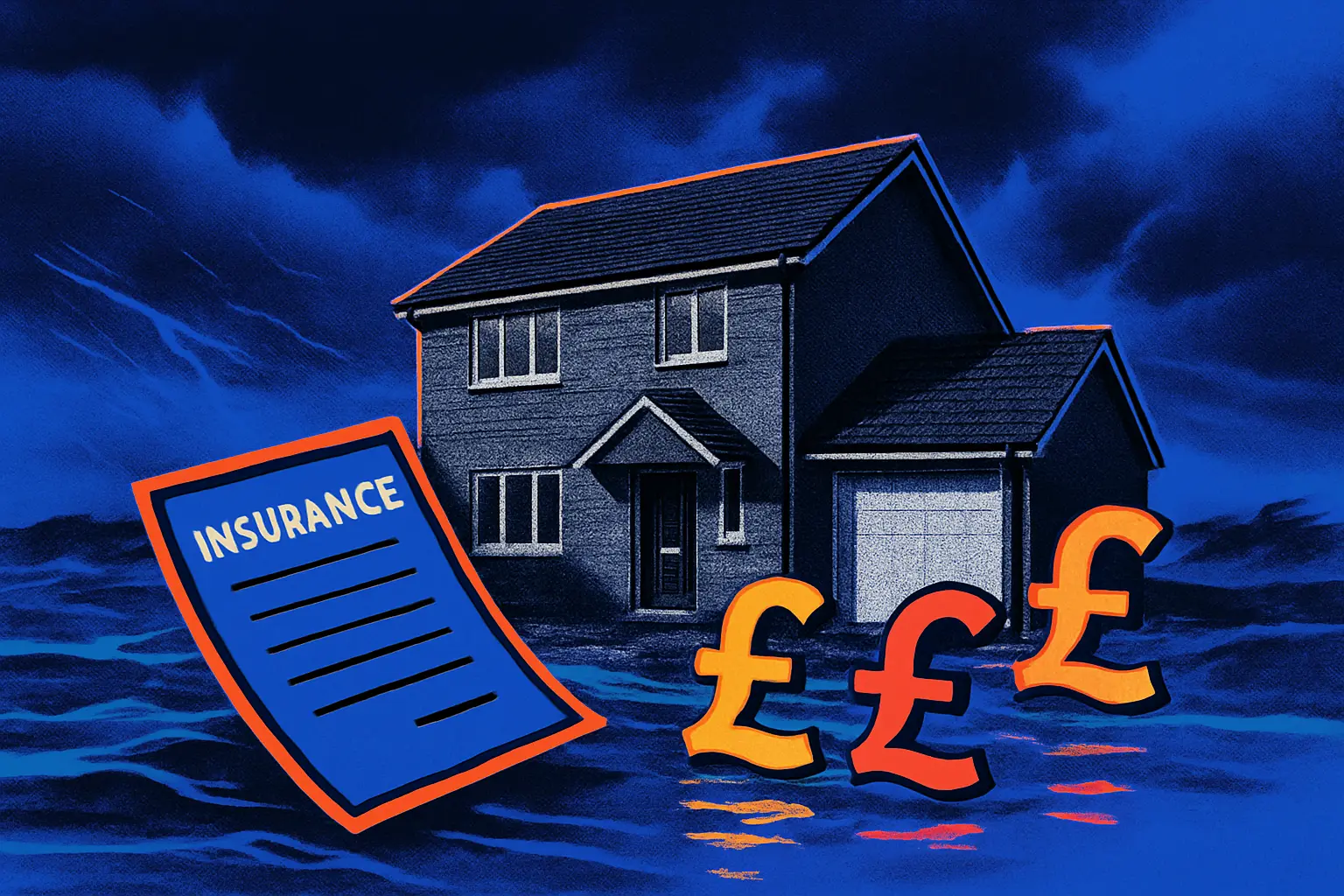A UK-focused, expert checklist to compare comprehensive car insurance, decode documents, choose add-ons, cut costs, and avoid invalidation before you apply or buy.
Headline - get the right cover first time
A clear checklist for UK drivers choosing comprehensive cover - what to check, what to add, and what to avoid before you click buy.
Smart preparation reduces premiums and prevents claim disputes.
Clarity now saves money later.
Why this guide matters
Comprehensive car insurance can be cost-effective and offers the highest level of protection in the UK. Yet the wrong details, missed exclusions, or undisclosed changes can invalidate a policy or inflate your premium. Use this structured checklist to match cover to how you use your car, avoid common pitfalls, and secure peace of mind.
Who will benefit
- UK motorists comparing fully comp against other cover levels
- New drivers or returning motorists after a break
- Families insuring multiple vehicles at one address
- Low-mileage drivers who want to avoid overpaying
- Anyone planning European trips by car
The essentials - terms you must know
Understanding the key cover types helps you compare policies accurately:
Core cover categories in the UK
| Cover type | What it covers | Typical use case | Risk to you |
|---|---|---|---|
| Third-party | Damage/injury to others only | Legal minimum | You pay for your own car repairs |
| Third-party, fire and theft | Third-party plus theft and fire | Older or lower-value cars | No own-damage cover from crashes |
| Comprehensive (fully comp) | Third-party, theft, fire, and your car even if at fault | Broad protection and peace of mind | Usually higher premium but often good value |
- Comprehensive can sometimes be cheaper than lower levels due to insurer risk models.
- Legal minimum in GB is at least third-party cover.
Key policy documents
- Certificate of motor insurance - legal proof of cover and use classes
- Schedule/document of insurance - cover dates, named drivers, vehicle details
- Policy booklet - exclusions, excesses, claim process, territorial limits
Check all names, reg number, voluntary excess, class of use (social, commuting, business), and any endorsements.
Useful add-ons to consider
| Add-on | What it does | When it helps | Cost impact |
|---|---|---|---|
| Legal expenses | Covers legal fees after non-fault disputes | Injury, recovery of losses | Low to moderate |
| No claims bonus protection | Keeps your discount after eligible claims | Preserves long-term savings | Moderate |
| Personal accident | Lump-sum for serious injury | Main earner drivers | Low to moderate |
| Key cover | Lost or stolen keys and locks | Keyless cars, families | Low |
| Wrong fuel cover | Draining and repairs | High-mileage or unfamiliar cars | Low |
| European cover extension | Longer trips and higher cover abroad | Touring, business travel | Moderate |
Choosing the right route
Match cover to how you drive
- Short trips under 5 miles can increase accident likelihood - note your pattern honestly.
- Low annual mileage may reduce premiums, but consider if comprehensive still offers best value versus TPFT.
- Commuting and business use can change class of use and price.
- Increasing voluntary excess cuts premiums but raises what you pay on a claim.
Households with more than one car
- Multi-car policies at the same address can deliver meaningful savings, often up to around 15% with some providers.
- Align renewal dates to maximise the discount and simplify admin.
Planning to drive in Europe
- Most UK policies include at least basic third-party cover for limited days, typically 90 to 180 per year.
- Extend duration and cover level if you want comprehensive protection abroad.
If in doubt, call the insurer and get any promises confirmed in writing.
Money at stake - costs, risks, returns
- Premium controls: choose a realistic mileage, consider telematics if applicable, raise voluntary excess within comfort, and evaluate multi-car.
- Financial risks: wrong use class, undeclared modifications, or named drivers who do not match actual use can invalidate policies.
- Value over time: protecting a no claims bonus can preserve significant discounts after a minor claim.
- Claim experience: approved repairer networks can simplify logistics and may include lifetime guarantees for work while you own the car.
The cheapest premium is poor value if a claim is later declined.
Are you eligible
Insurers apply assumptions and eligibility checks. Confirm you meet them before buying:
- Driver status - age limits, licence type, medical conditions, and UK residency
- Vehicle details - make, model, value, security devices, storage location overnight
- Use categories - social only, social and commuting, or business use
- Convictions and points - all motoring offences and pending prosecutions
- Claims history - all incidents, even if no claim was made
- Modifications - declare alloy wheels, body kits, remaps, suspension, infotainment upgrades
If you cannot meet an assumption, disclose it in the application or contact the insurer for a manual referral. Never guess.
Your pre-purchase workflow
- Define usage, mileage, and class of use
- Choose cover level and shortlist add-ons
- Set a realistic voluntary excess
- Gather documents and driver histories
- Compare quotes and repairer-network benefits
- Read the policy schedule and booklet fully
- Confirm European cover and limits if needed
- Validate all details, then buy securely
Benefits and trade-offs
- Pros: broad own-damage protection, peace of mind, optional extras for tailored risk, potential multi-car savings, smoother claims via approved repairers.
- Cons: higher premiums than basic cover, larger excesses can bite, some add-ons overlap with other products, misdeclared details risk invalidation.
Balance cost against the quality of claims handling and repair guarantees. A slight premium increase can be justified by lifetime repair guarantees and stronger customer support.
Watchpoints before you commit
- Names, addresses, and reg numbers must be exact matches with DVLA records.
- Ensure the correct class of use, especially if you commute or do business mileage.
- Check exclusions: driving other cars, courtesy car availability, windscreen limits, audio equipment caps, and personal belongings.
- European cover - confirm days allowed, countries included, and proof you must carry.
- Excesses - note separate windscreen, young driver, and theft excesses.
If it is not written in the schedule or booklet, assume it is not covered.
If comprehensive is not right for you
- Third-party, fire and theft - for older cars where own-damage cover is less critical.
- Third-party only - legal minimum, typically for very low-value vehicles accepting repair risk.
- Pay-per-mile or telematics - for low-mileage drivers seeking premium alignment with usage.
- Public transport or car clubs - if you rarely drive, these can be more economical overall.
Frequently asked questions
Is comprehensive always more expensive than TPFT?
Not always. Insurer risk models sometimes price comprehensive lower for certain drivers or cars. Always compare both.
Do I need to declare small modifications like alloy wheels?
Yes. Any modification can affect risk and must be declared to avoid invalidation.
Will my policy cover me to drive in Europe?
Usually at least third-party for a limited number of days. Upgrade if you want fuller protection or longer trips.
Should I buy no claims bonus protection?
If you have a high discount and want to avoid losing it after a claim, it can be cost-effective. Check the terms on what events are protected.
What documents should I read before buying?
Your certificate, schedule, and policy booklet. Confirm drivers, vehicle, excesses, endorsements, exclusions, and claims process.
Are approved repairer networks worth it?
They can streamline claims and offer quality guarantees. Verify courtesy car terms and repair guarantees.
What to do next
- Gather driver histories, mileage estimates, and any modification details.
- Shortlist add-ons that fit your risks - legal expenses, NCB protection, and European extensions are common picks.
- Compare at least three comprehensive quotes, focusing on repair networks, exclusions, and excesses as much as price.
- Save documentation and confirm everything in writing before paying.
Aim for best value, not just the lowest price.
Important information
This guide provides general information for GB motorists and is not personal advice. Policies vary by insurer. Always read your specific documents and confirm cover details before purchasing or travelling.
Get smarter with your money
Join thousands of people in the UK who are taking control of their financial future

FAQs
Common questions about managing your personal finances
Begin by tracking every expense for one month. Use an app or spreadsheet. No judgment. Just observe your spending patterns.
Cancel unused subscriptions. Cook at home. Compare utility providers. Small changes add up quickly.
Aim for 20% of your income. Start smaller if needed. Consistency matters more than the amount.
Choose reputable apps with strong security. Read reviews. Check privacy policies. Protect your financial data.
Pay bills on time. Keep credit card balances low. Check your credit report annually. Be patient.
Still have questions?
Our team is ready to help you navigate your financial journey
More financial insights
Explore our latest articles on personal finance and money management




